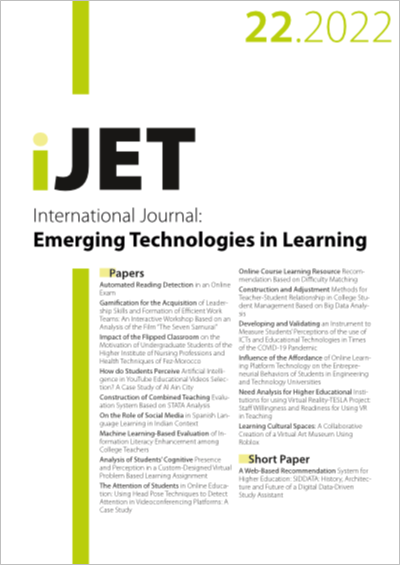Construction and Adjustment Methods for Teacher-Student Relationship in College Student Management Based on Big Data Analysis
DOI:
https://doi.org/10.3991/ijet.v17i22.35119Keywords:
big data analysis; college student management; teacher-student relationship (TSR); counselorAbstract
Building a harmonious Teacher-Student Relationship (TSR) is a necessary work for college student management, because different TSRs can result in different effects in student management and cultivation. However, in existing studies, the definitions of harmonious TSR given by different scholars are dimensionless, the understandings of the nature of TSR is not thorough enough, and the analysis of the influencing factors of TSR often lacks the support of theoretical evidences. To overcome these shortcomings, this paper aims to study the construction and adjustment methods for the TSR in college student management based on big data analysis. At first, the paper investigated the daily behavioral features of college students on online management platforms; then, with the help big data analysis and data processing techniques, this paper calculated the fitness degree of harmonious TSR between college students and the counselors and other administrators who engaged in student management works and have interacted with them. After that, based on the calculation results of the said fitness degree, this paper built a basic interactive network for college student management works, and gave the method for dividing student management groups. At last, experimental results verified the effectiveness of the proposed algorithm.
Downloads
Published
How to Cite
Issue
Section
License
Copyright (c) 2022 Nan Zhang (Submitter); Limin Xi, Lei Zhang, Buying Chen

This work is licensed under a Creative Commons Attribution 4.0 International License.


